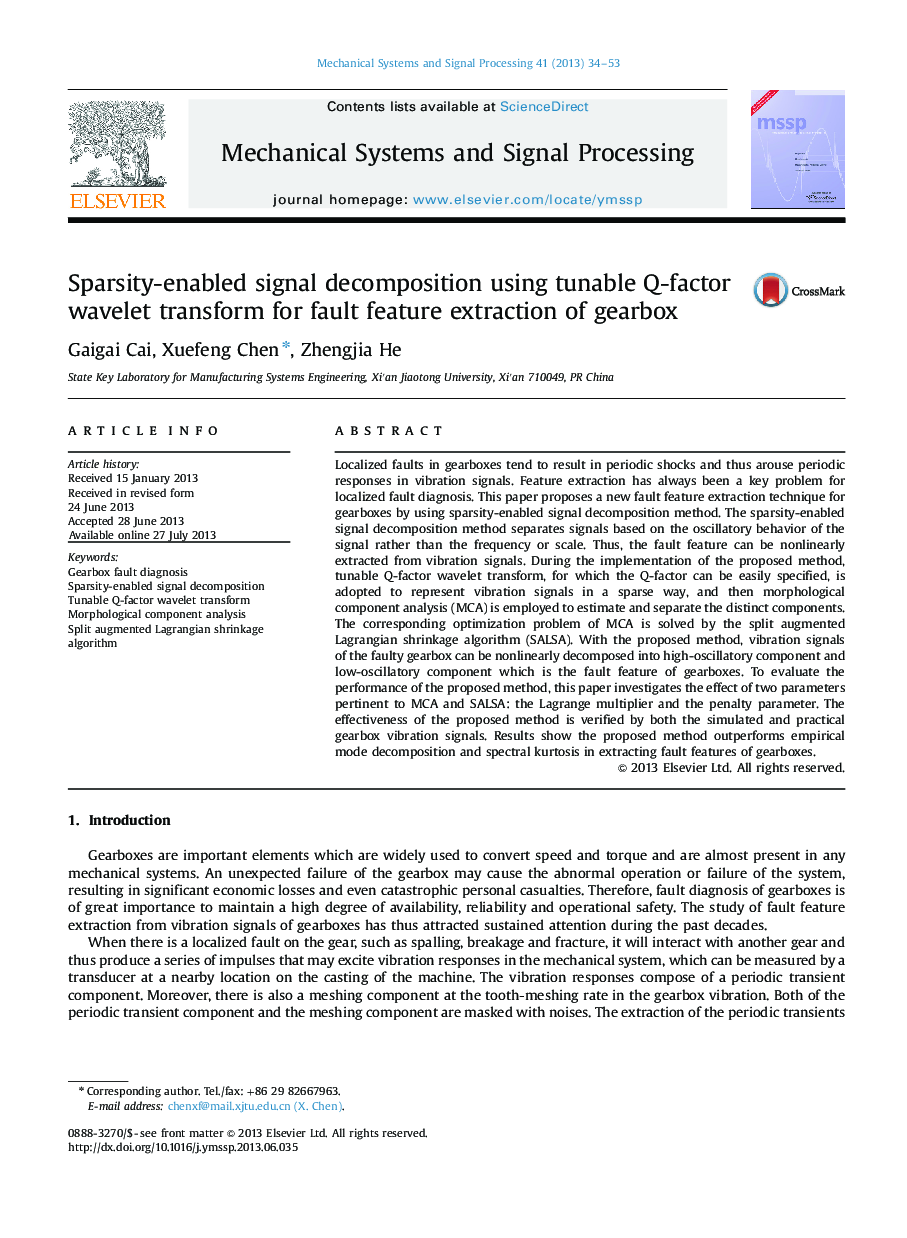| Article ID | Journal | Published Year | Pages | File Type |
|---|---|---|---|---|
| 6956477 | Mechanical Systems and Signal Processing | 2013 | 20 Pages |
Abstract
Localized faults in gearboxes tend to result in periodic shocks and thus arouse periodic responses in vibration signals. Feature extraction has always been a key problem for localized fault diagnosis. This paper proposes a new fault feature extraction technique for gearboxes by using sparsity-enabled signal decomposition method. The sparsity-enabled signal decomposition method separates signals based on the oscillatory behavior of the signal rather than the frequency or scale. Thus, the fault feature can be nonlinearly extracted from vibration signals. During the implementation of the proposed method, tunable Q-factor wavelet transform, for which the Q-factor can be easily specified, is adopted to represent vibration signals in a sparse way, and then morphological component analysis (MCA) is employed to estimate and separate the distinct components. The corresponding optimization problem of MCA is solved by the split augmented Lagrangian shrinkage algorithm (SALSA). With the proposed method, vibration signals of the faulty gearbox can be nonlinearly decomposed into high-oscillatory component and low-oscillatory component which is the fault feature of gearboxes. To evaluate the performance of the proposed method, this paper investigates the effect of two parameters pertinent to MCA and SALSA: the Lagrange multiplier and the penalty parameter. The effectiveness of the proposed method is verified by both the simulated and practical gearbox vibration signals. Results show the proposed method outperforms empirical mode decomposition and spectral kurtosis in extracting fault features of gearboxes.
Related Topics
Physical Sciences and Engineering
Computer Science
Signal Processing
Authors
Gaigai Cai, Xuefeng Chen, Zhengjia He,
